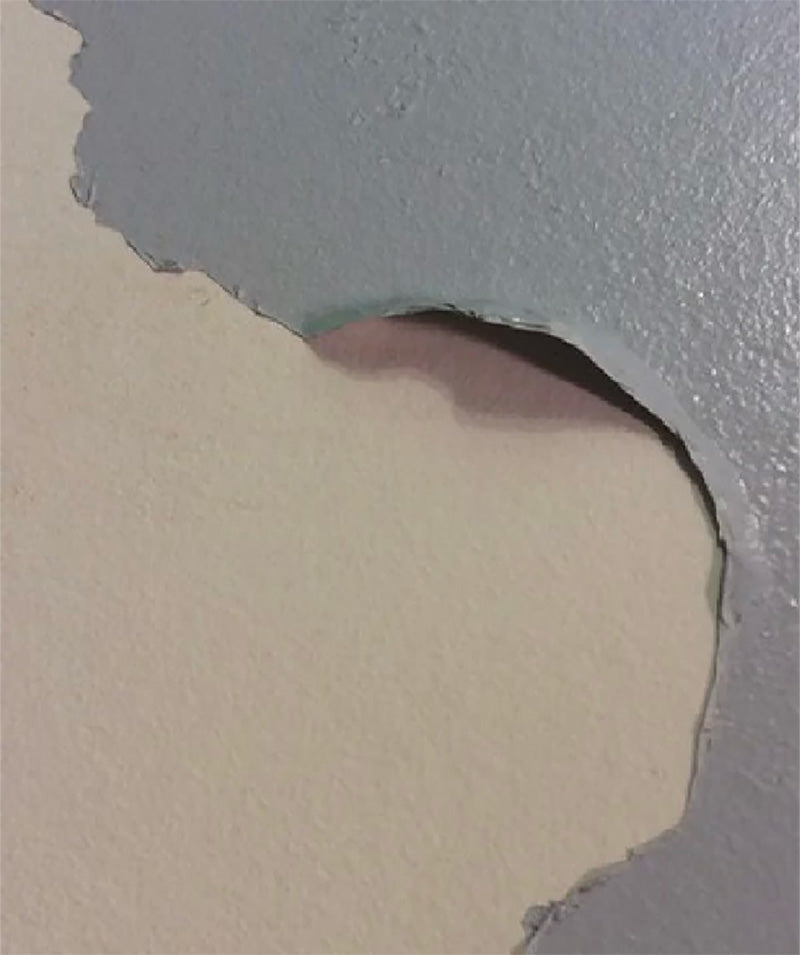
Mechanical & Chemical
Adhesion
Adhesion can be tested using a sharp blade to create perpendicular cross cuts 1mm and 2mm apart. Very poor adhesion will be apparent as total delamination of the squares; but finer degrees of adhesion can also be discerned with reference to ISO 2409 and rated 0-5 (best to worst).
Processing Issues
Little or no coating adhesion to part immediately after the coating process.
-
Potential Cause
Cleaning / Pre-treatment - Soils are not being removed as the cleaning/pre-treatment process is unsatisfactory. Oils and other surfactants will limit effectiveness of the chemical pre-treatment: pre-treatments are often designed to create a crystalline layer between the metal and coating. As this is a chemical reaction, the chemical must be in good contact with the metal for a sufficient length of time. The pressure of the chemical treatment hitting the parts has been carefully determined by the pre-treatment supplier and is an integral part of the process, nozzles that have been blocked, or unblocked such that the spray pressure has changed, will not be performing the cleaning function correctly.
-
Solution
Check to ensure that all soils have been identified. Test all stages in the preparation process. In particular, test whether the phosphate coating weight is too low or high; check that there is enough detergent to remove the oils from the manufacturing process; inspect rinse tanks and ensure they are clean and not depositing oils after the chemical cleaning stage – also check that chemicals form the first stage are not being carried over into the rinse tank; inspect the spray nozzles – ensure that they haven’t been knocked by parts travelling through the cleaning process and that they are clean and adjusted for maximum spray force and coverage. Check that parts are hung and orientated to achieve maximum coverage. If in doubt, contact your pre-treatment supplier.
-
Potential Cause
The chemical pre-treatment is not appropriate for the metal substrate or a change has been made in the substrate without making changes to the process. Chemical pre-treatment solutions are often designed for a limited number of metals, for instance iron phosphates are designed for mild steel; without modification by the chemical supplier they will not provide an adequate key for zinc or aluminium substrates.
-
Solution
Check the curing of the powder coating. The simplest method is to carry out a solvent rub test: using MEK or Cellulose Thinners, rub the surface of the coating back and forth with even pressure 50 times. Although most coatings will exhibit minor softening and gloss reduction, the coating should not be easily removed by scratching; and only minor staining of the solvent rag should occur. Modify cure conditions by increasing temperature and dwell time in the oven.
-
Potential Cause
If used, two-pack zinc etch primer has absorbed moisture from environment – possibly left too long before over-coating. In this instance the coating can be removed easily from the substrate (usually aluminium) and generally the adhesion issue is at the etch primer-aluminium interface rather than the etch primer-powder interface. This can be seen as the exposed aluminium will have no yellow staining consistent with the application of the 2 pack etch primer.
-
Potential Cause
For a bright Hot Dip Galvanised (HDG) surface: Very poor adhesion of powder coating after full cure cycle, despite a recognised pre-treatment process being used (cleaning and profiling). Blasting of the surface prior to powder coating does not significantly improve the adhesion.
After the steel is withdrawn from the galvanizing bath and excess zinc is removed. The galvanized item is air-cooled or sometimes quenched in liquid to passivate the zinc coating. This passivation delays the natural weathering of the galvanized surface and keeps the effect brighter for longer.
As passivation treatments and contaminants in the quench bath will affect the wetting of the zinc surface, the American Galvanizers Association recommends that “Passivation should be avoided if the part is going to be duplex coated (painting or powder coating over the galvanized steel) as quenching can affect adhesion of the top coat system.”
Environmental Deterioration
Poor adhesion of coating to part after a prolonged time in service. Problems often occur around points where the coating has been compromised by damage, or where there are sharp edges. Delamination may occur.
-
Potential Cause
The most likely cause is poor pre-treatment application or a poor choice of preparation for the substrate. It is important that the correct system of preparation is chosen before powder coating application, taking into account the substrate and the conditions that the coated piece will be exposed to. Each substrate will have its own particular pre-treatment system – there is no ‘one size fits all’ solution to chemical pre-treatment and surface preparation in general. Environments are classified in ISO 12944-2 from C1 to C5 (lowest to highest corrosive environment).
-
Solution
On-site rectification or replacement of coated parts. To prevent recurrence, use a more appropriate system of preparation to ensure the best key of powder coating to the surface. Make engineering steps to eliminate areas that cannot be painted, or that will trap pooled water. Take precautions to avoid or remove sharp corners and edges where coating weight will be very low. Consider using a two-coat system to build film weight around the corners. For very aggressive environments, ensure that even non-significant, or hidden, surfaces are coated. If in doubt, test the preparation method using a salt fog cabinet.
-
Solution
On-site rectification or replacement of coated parts. To prevent recurrence, ensure that testing of cure is a standard part of the quality assurance process. Testing for cure may be conveniently carried out using a solvent rub test in conjunction with an oven temperature test recorder. The oven temperature and component dwell times should be adjusted to suit each item. Where items have multiple substrate gauges, the heaviest and thickest component should be checked.